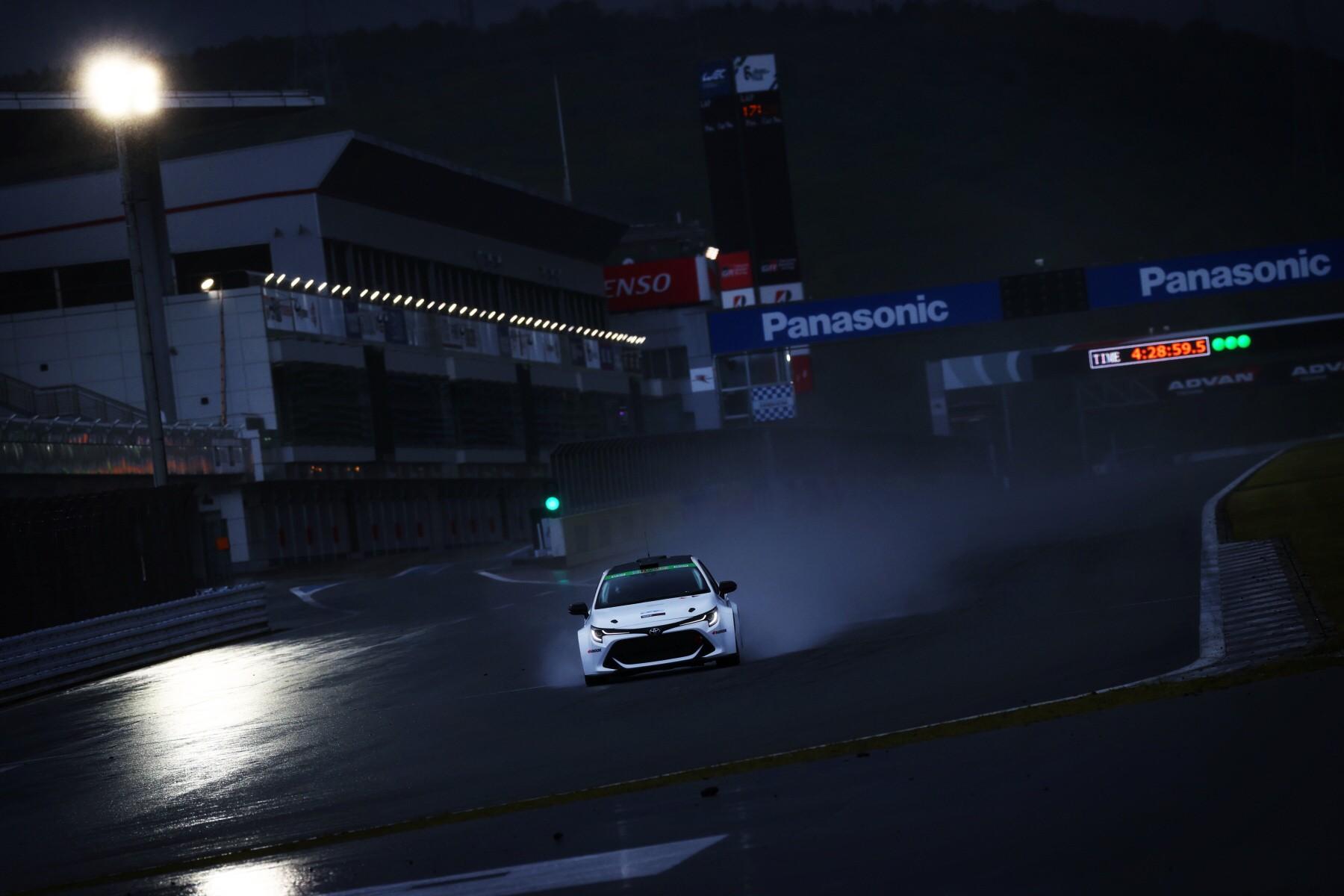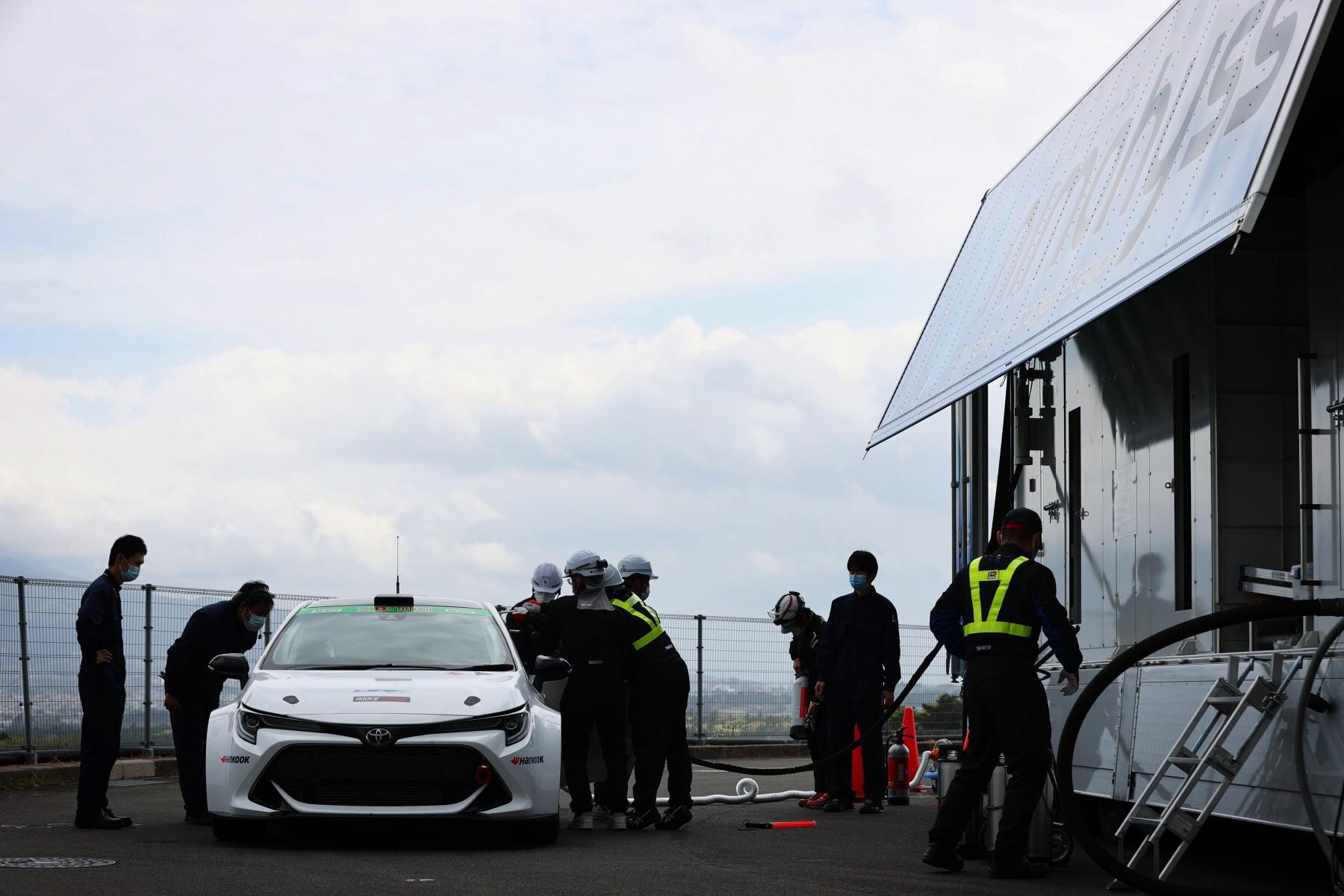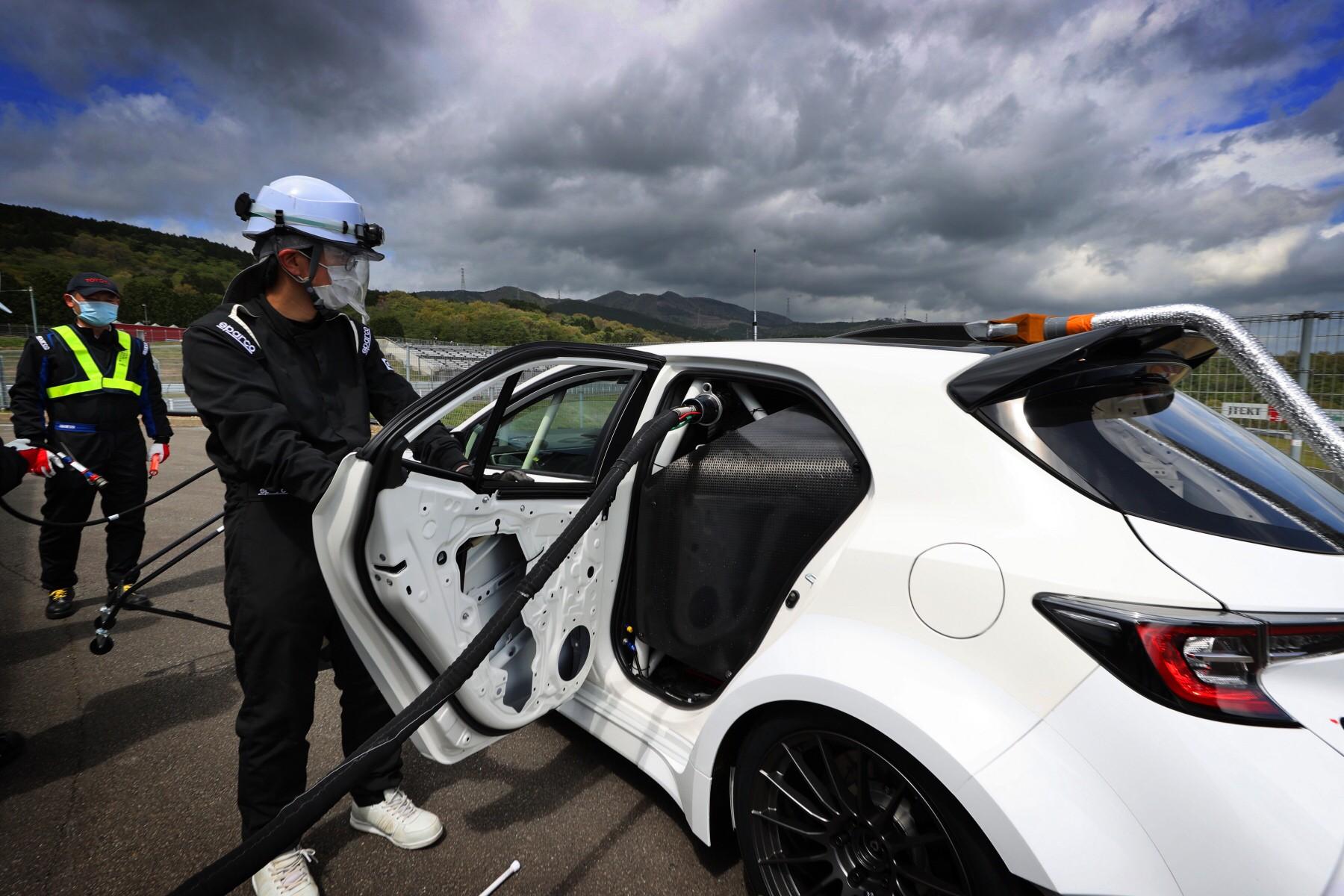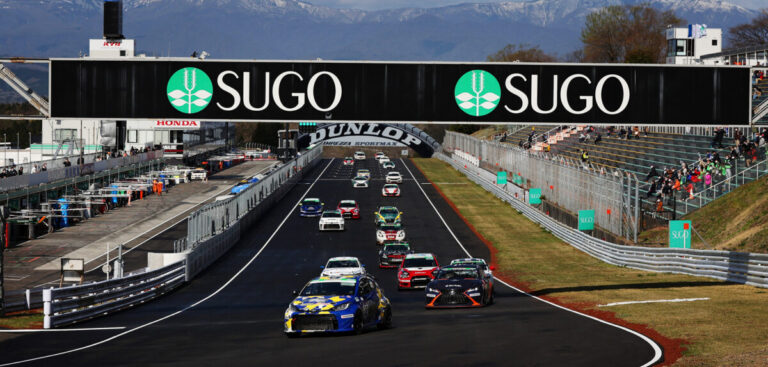On April 22, Toyota announced that it was developing a hydrogen-fueled engine and that one of its Corolla Sport models, equipped with the engine, would enter the Super TEC 24 Hour race in the Super Taikyu series at Fuji International Speedway, run under the Rookie Racing team name with the car prepared by Toyota’s Gazoo Racing (GR) operation. With the race due to be held just one month later (May 21-23), it was impressive that the car only had its first shakedown on April 24.
According to Toyota president Akio Toyoda, who would race the car under his nom de guerre, Morizo, there were a number of motivations for plunging his company’s newest technology in at the deep end of competition: “I want to take up the challenge of working with hydrogen-powered engines, which represent a hidden potential for motorsports going forward. The reason for competing in a 24-hour endurance race is that simply lasting three or five hours is not enough. You have to have done the preparation to last for 24 hours. On top of that, I’m one of the drivers. Many people in Japan associate hydrogen with explosions. So, I want to show that it is safe by driving in a race myself.” The chassis used was that of a Corolla road car, however, it was outfitted with the running gear from a Yaris GR, including the four-wheel drive system. As lead engineer on the project Naoaki Ito explained, conversion of the Yaris GR’s 1600cc, three-cylinder, turbocharged engine was not a completely straightforward operation, particularly given Toyota’s focus on assessing the production viability of hydrogen, efforts were made to retain as many standard parts as possible.
The chassis used was that of a Corolla road car, however, it was outfitted with the running gear from a Yaris GR, including the four-wheel drive system. As lead engineer on the project Naoaki Ito explained, conversion of the Yaris GR’s 1600cc, three-cylinder, turbocharged engine was not a completely straightforward operation, particularly given Toyota’s focus on assessing the production viability of hydrogen, efforts were made to retain as many standard parts as possible.
“We thought that achieving this would enable the conversion of existing car engines to hydrogen, providing a powerful weapon in the quest for carbon neutrality,” said Ito. “Although we said that we have ‘converted’ an engine from the GR Yaris, it would be more correct to say that ‘we have been working to enable conversion’.
“We believe that attaining carbon neutrality will require not only building new cars, but also utilizing and improving the cars and technologies that already exist. To that end, we sought to make conversion possible with minimal component changes and control technologies. We’ve been working at this for several years now, and it certainly hasn’t been easy. Initially we tried a bi-fuel approach, using 50% gasoline and 50% hydrogen. From there we attempted 100% hydrogen, but initially the engine broke down within five minutes. Thinking back to those days, taking on a 24-hour race seemed beyond even our wildest dreams.”
One of the main challenges facing the team was developing an injection system capable of handling hydrogen while also achieving stable and efficient combustion. Here, the expertise of long-term supplier Denso was called upon to develop the injectors while the fuel tank technology from Toyota’s Mira FCEV (fuel cell electric vehicle) was harnessed to ensure safe storage of the hydrogen fuel under racing conditions.
To this end, the Corolla features four hydrogen tanks mounted within the cabin. Where the Mirai uses three different sized tanks (small, medium and large), the Corolla used two standard medium tanks and two that had been specially shortened, giving a combined fuel capacity of 180 liters. The duty cycle of the hydrogen engine compared with a fuel cell also had to be accounted for, with the former emptying the hydrogen tanks much faster due to sustained full throttle running. Toyota noted that though the Mirai tanks had been thoroughly tested in challenging road running, flat out use for 24 hours was “uncharted territory”.
The duty cycle of the hydrogen engine compared with a fuel cell also had to be accounted for, with the former emptying the hydrogen tanks much faster due to sustained full throttle running. Toyota noted that though the Mirai tanks had been thoroughly tested in challenging road running, flat out use for 24 hours was “uncharted territory”.
The tanks were also subject to additional penetration tests to ensure they were fit for competition use, and when installed in the vehicle, are surrounded by composite plates to provide further protection. The downside of this being that rear visibility for the drivers is non-existent, a problem circumvented through the use of a rear-view camera.
The hydrogen fuel used during the race was stored in four, mobile hydrogen tankers in the paddock, which required special dispensation from Shizuoka Prefecture (in which Fuji Speedway is located) due to the volume of gas present. It was also the case that hydrogen filling apparatus could not be located in the pitlane, therefore during the race, the drivers had to divert into a dedicated area of the paddock, where two of the tankers were parked, which was treated as an extension of the pitlane.
Explaining the pitstop procedure before the race, GR’s group leader, Masaaki Ichikawa, outlined. “I consulted the team and the circuit and requested that Rookie Racing’s pit be positioned at the very end near the racetrack’s first corner. That’s because doing so would make it easier to get the car back out onto the racetrack from the pit lane.
“After coming into the pit, pit work other than fuel filling, such as tire and driver changes, is done first. After that, the car will start its engine and take off on its own. Usually, a car would head back to the racetrack. But, in our case, we’ll have the car temporarily drive out to the paddock area away from the racetrack.
“We have the car stop at the first station first and start the hydrogen filling procedure there. Then the car will start its engine and go to the second station a few meters away to top off its tanks, start its engine again, and head back out onto the racetrack. At first glance, it might seem like a bunch of trouble, but the filling time can actually be shortened by doing it this way, so that’s what I came up with.”
Toyota’s pioneering car was never going to win the 24-hour event, which featured a host of classes including GT3 machinery, but its debut was impressive nonetheless, especially as it actually finished the race – always an achievement over 24 hours.
The Corolla completed a total of 358 laps (the race winning Nissan GT-R Nismo GT3 ran twice that), making 35 pitstops to give an average stint length of 10.2 laps. It managed a best lap time of 2mins 04.059 seconds, which put it faster than the quickest cars in the ST-5 class (modified production cars, 1,500cc or less), and 24 seconds off the race’s fastest lap.
Clearly, this was a first step for Toyota, and issues around range and speed of refueling need to be addressed for its hydrogen engine to become a serious competition proposition. However, that the company was prepared to put its newest technology on the line in competition speaks volumes of Toyoda’s approach.
“The fact that we were able to complete the car within a very short period (which would be impossible for a normal car) and start testing so quickly is a testament to all those who embraced the significance of the hydrogen-powered engine and worked hard to make this happen,” said Naoyuki Sakamoto, chief engineer of GR’s Project Operation Division. “For me, while working on this project I have found myself thinking not only about building a hydrogen-powered vehicle, but about the future that it would bring about.
“Testing this vehicle is about identifying potential future issues of this technology, and I believe it was our united vision that enabled us to get the car running without major trouble so far. I believe that work brings happiness if everyone involved in the development can have a dream of the same future. I hope we can continue to work as one, with gratitude for the opportunity to be part of this project. Thank you for today.”


